Abstract
The authors used qualitative and quantitative data to identify and interpret specific images teens have about smoking and smokers. Qualitative data were collected in 1996 from 793 teenagers participating in 125 focus groups at eight different sites across the United States. Most focus groups were homogeneous with respect to gender, ethnicity, and smoking status. Ages ranged from 12 to 18 years, and about half of the participants were female. The majority of participants (62%) were white and African American, the remainder (38%) were Hispanic, American Indian, and Asian/Pacific Islander. Groups were comprised of smoking and nonsmoking teens. Focus group activities were used to elicit image-related discussions about attitudes, beliefs, and perceptions of smoking. Investigators identified seven consistent and distinctive image themes: Appearance (smoking is dirty and unattractive), Activity (nonsmokers have busy, active lives), Drugs and sex (smokers are substance abusers and are sexually active), Rebellion (smokers belong to rebellious groups), Affect (smokers are depressed, angry, and stressed-out), In control (nonsmokers have self-control and are independent), and Pride (nonsmokers are proud of themselves, their families, and their heritage). A large scale, multi-site qualitative research approach can increase understanding of teen smoking. The identification of distinctive images of smoking can help researchers develop more sophisticated models of the processes of teen smoking than currently exist.
Full text
PDF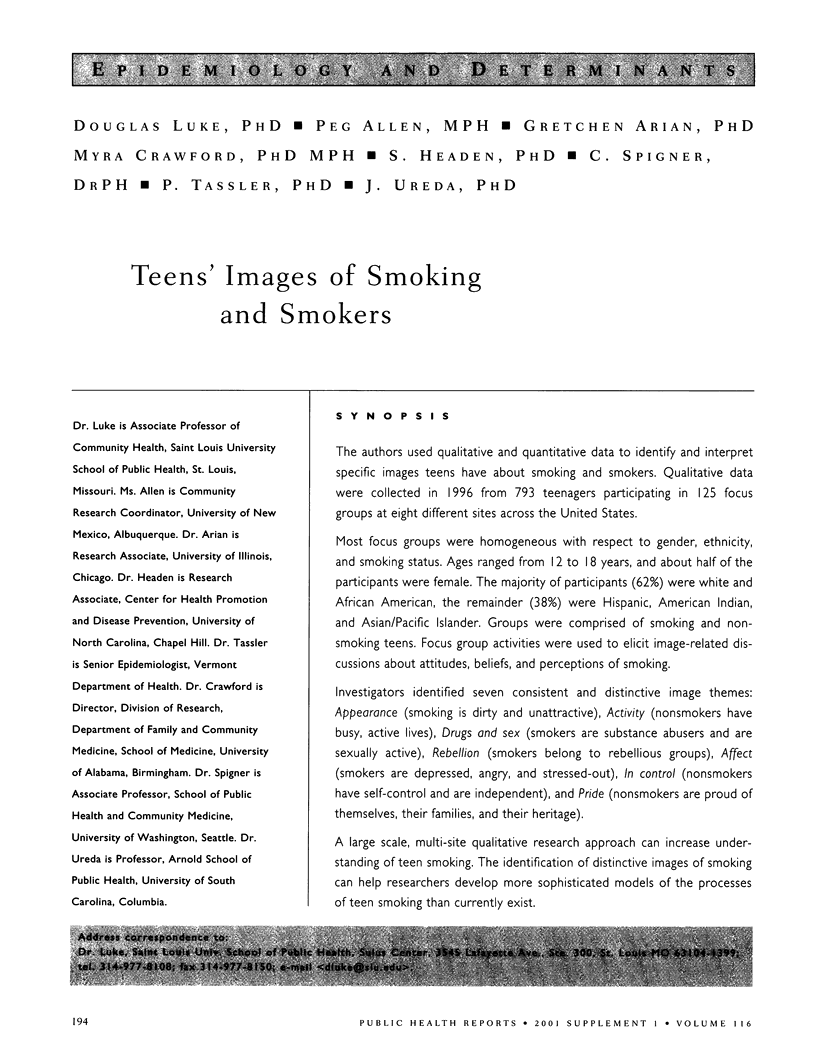
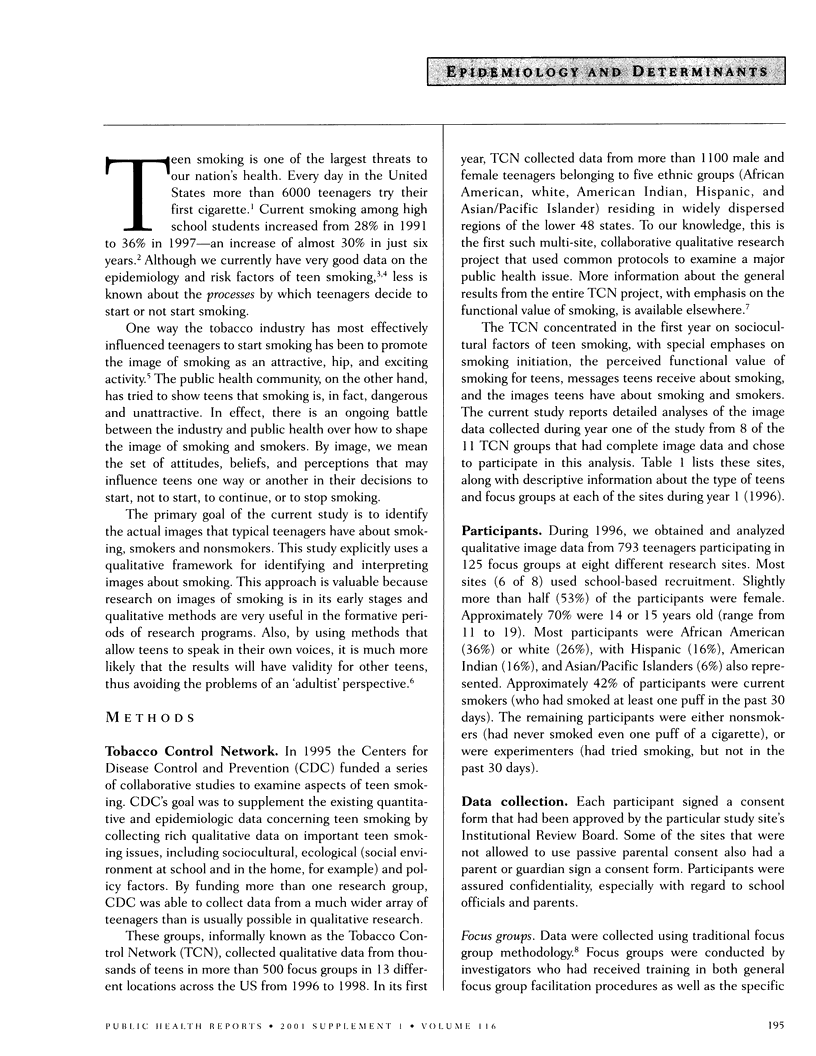
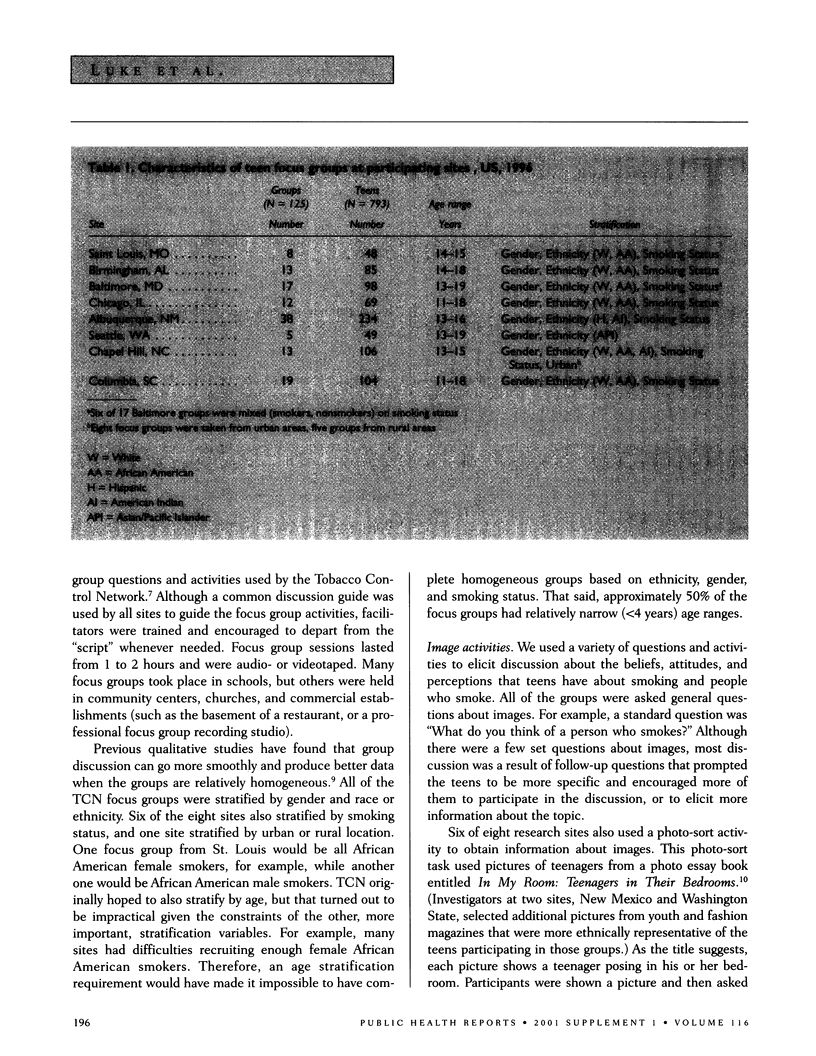
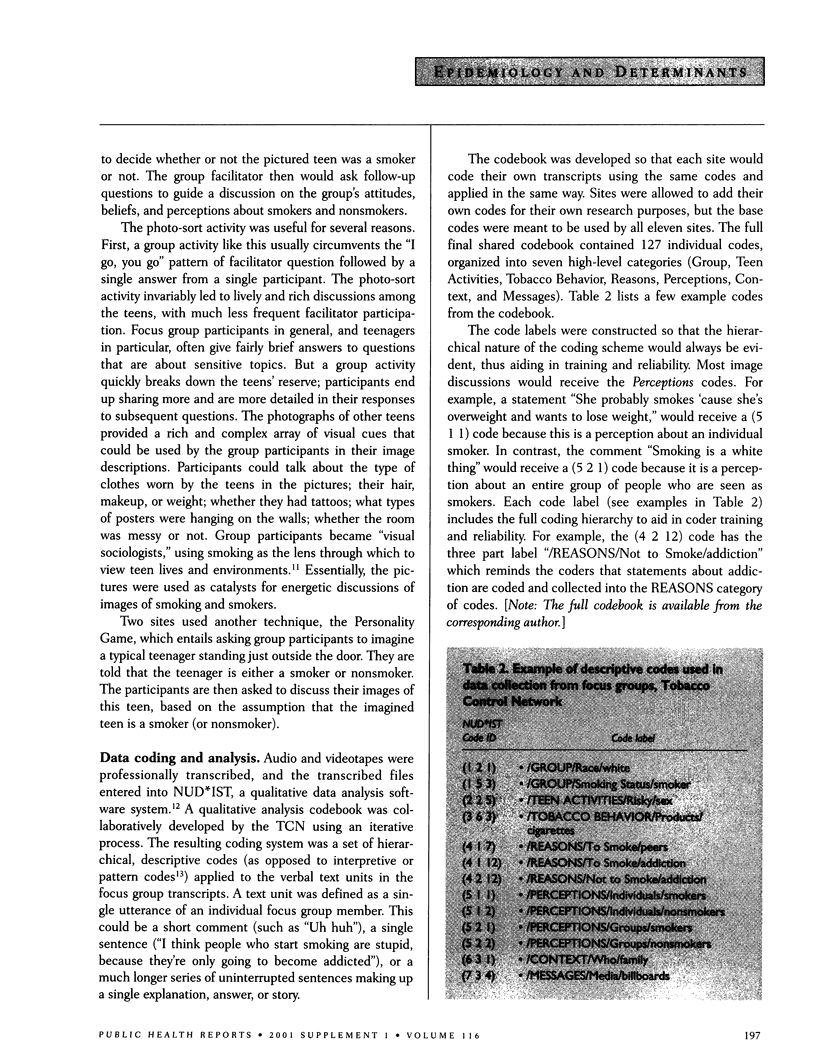
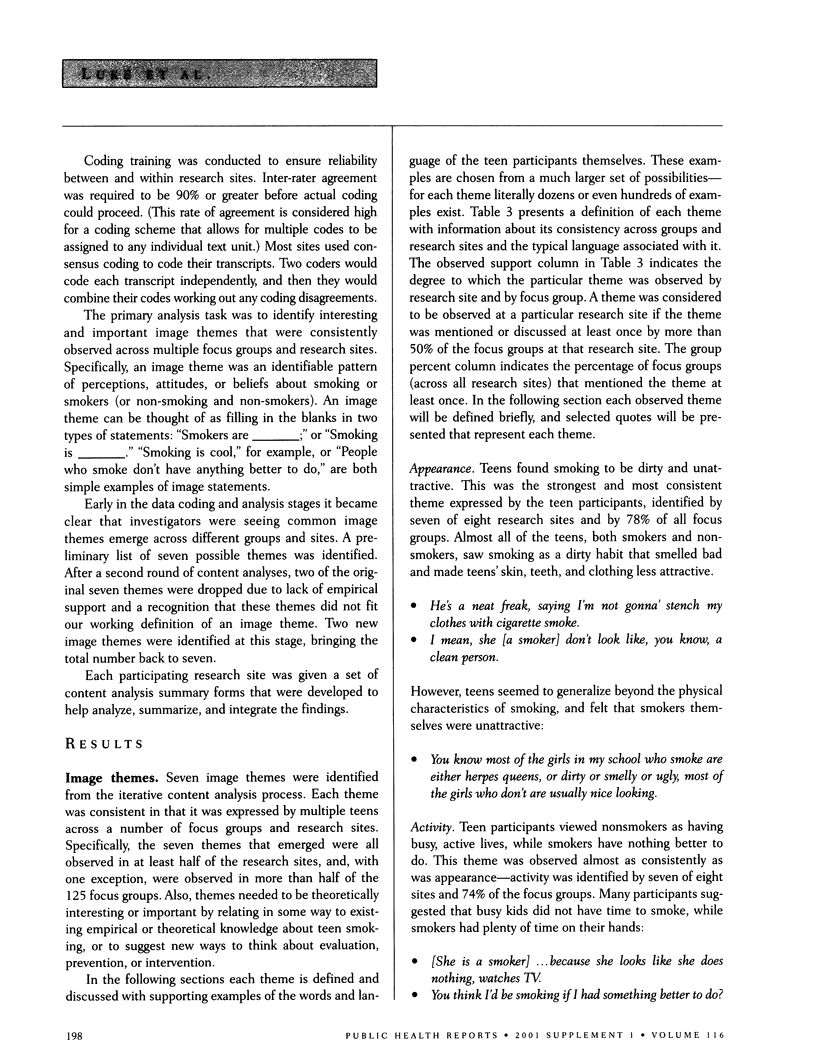
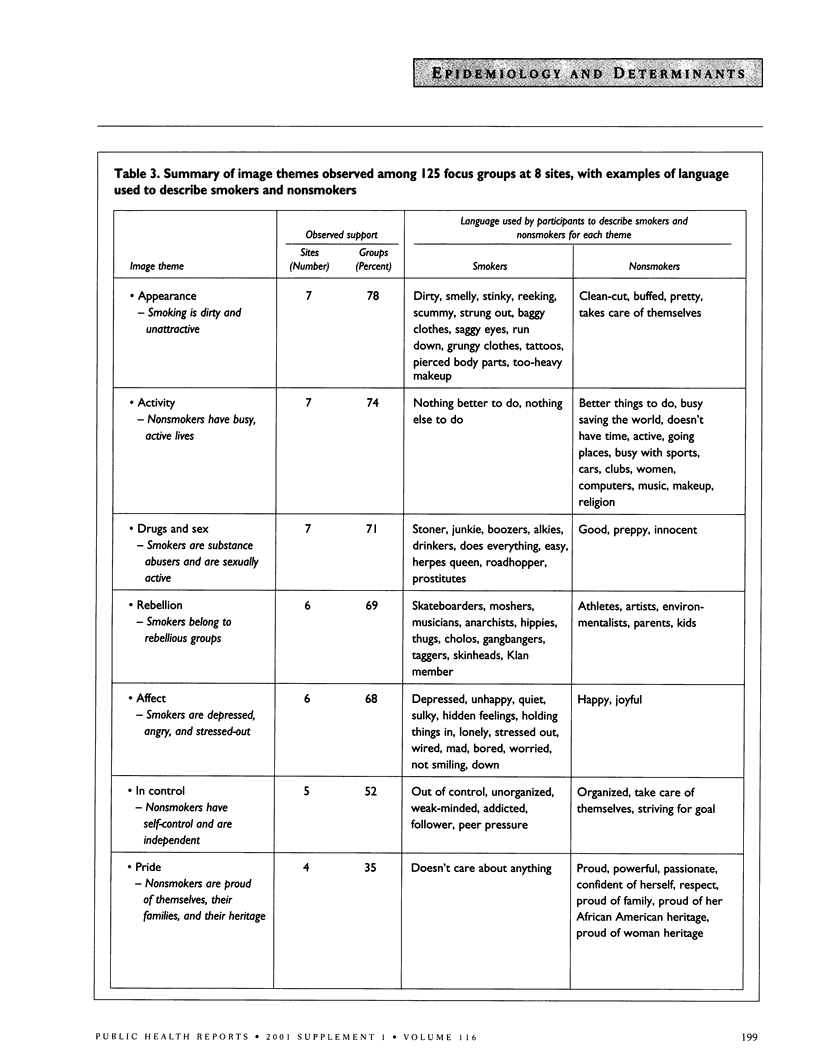

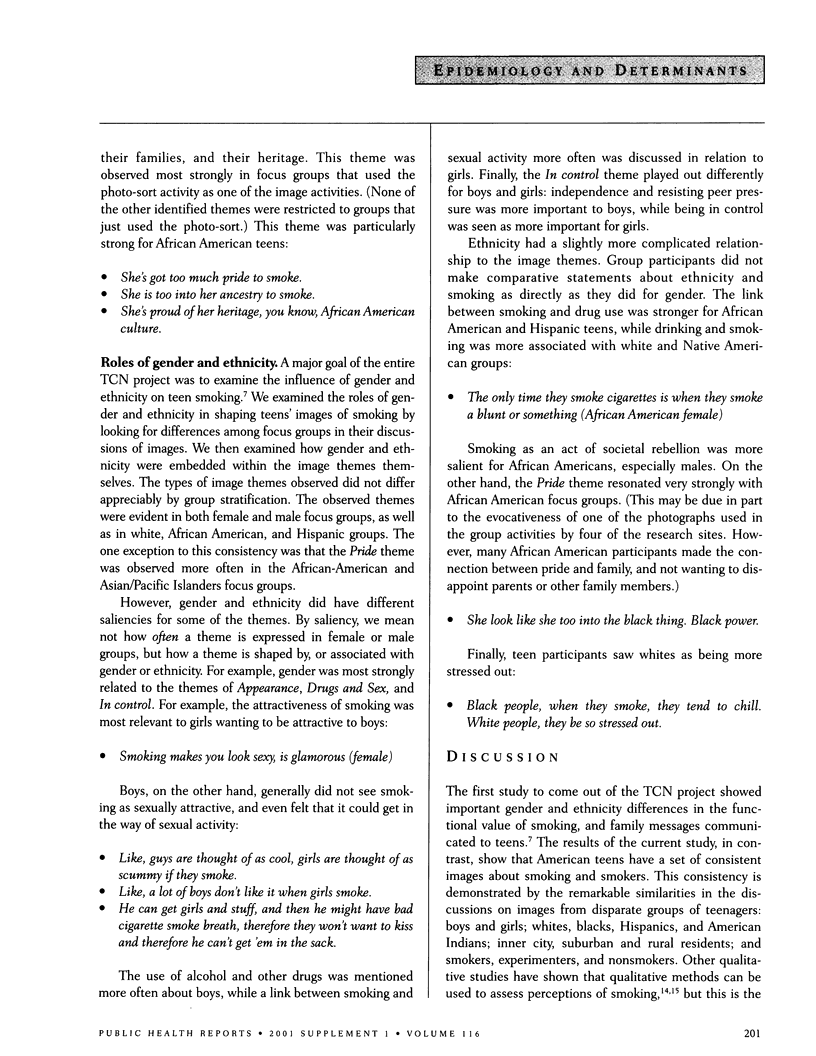
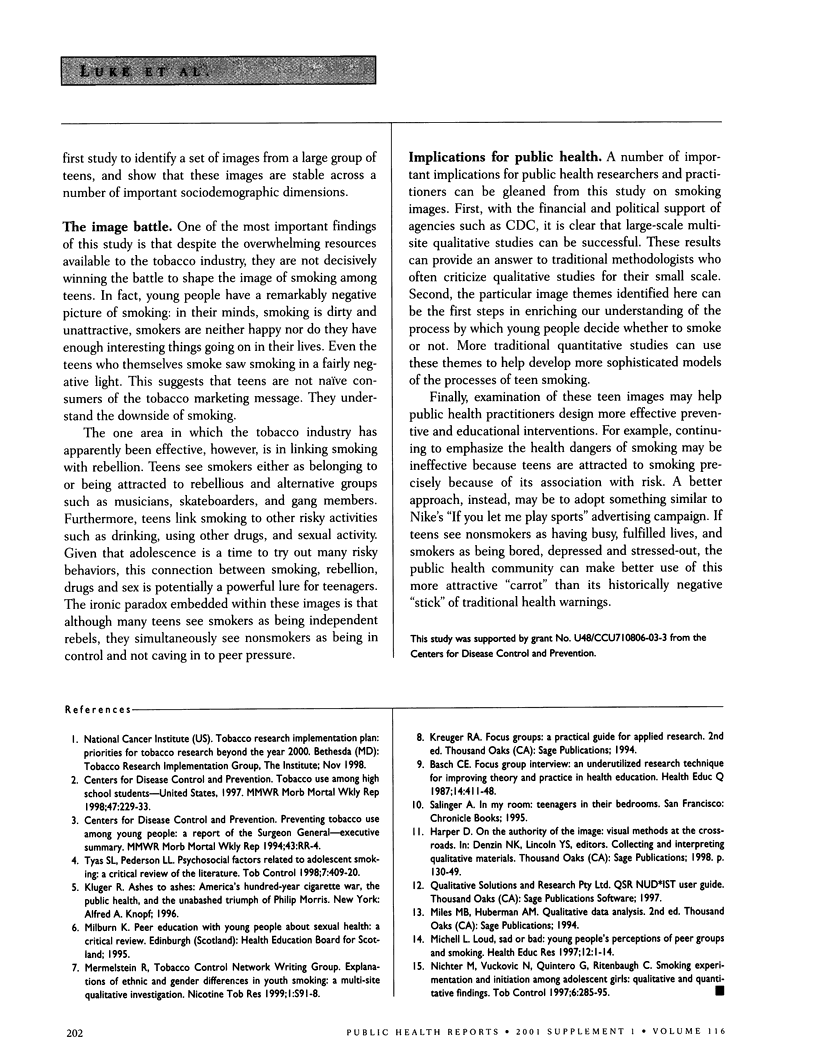
Selected References
These references are in PubMed. This may not be the complete list of references from this article.
- Michell L. Loud, sad or bad: young people's perceptions of peer groups and smoking. Health Educ Res. 1997 Mar;12(1):1–14. doi: 10.1093/her/12.1.1-a. [DOI] [PubMed] [Google Scholar]
- Nichter M., Nichter M., Vuckovic N., Quintero G., Ritenbaugh C. Smoking experimentation and initiation among adolescent girls: qualitative and quantitative findings. Tob Control. 1997 Winter;6(4):285–295. doi: 10.1136/tc.6.4.285. [DOI] [PMC free article] [PubMed] [Google Scholar]
- Tyas S. L., Pederson L. L. Psychosocial factors related to adolescent smoking: a critical review of the literature. Tob Control. 1998 Winter;7(4):409–420. doi: 10.1136/tc.7.4.409. [DOI] [PMC free article] [PubMed] [Google Scholar]


